Floorball in Germany: a small sport in a big country. How should this change? Kimmo shares his opinion.
“There was quite a nice article on Paakallo, the Finnish floorball-site, from the current Trainer of UHC Sparkasse Weißenfels, Ilkka Kittilä. He wrote at length about the challenges Germany faces on the international level being a small country in floorball-circles. He writes about the cultural challenges between Finland and Germany as the meaning of family for example often takes far higher priority in one’s life than in Finland… so to plan trainings 5x / week is probably just a pipe-dream here.
I will not try to translate the entire article here but wanted to raise a couple of points in addition to those Ilkka in his article did. These points are probably valid for many other countries as well…or I could believe so anyway…
GAME-FORMAT
In my opinion, Germany does shoot itself in the foot here a little bit with the game-format.
(Article continues below photo)

What do I mean with this? We might be some of the lucky ones here in the western part of Germany as we have several floorball-clubs in a relatively small area. However, the memberships in these clubs are often so small that organizing a meaningful competition for the juniors is extremely hard. If we (DJK) already have at times difficulties finding people to play on a game-day, I can only imagine what it is in some smaller towns in the middle of nowhere.
This has probably played a big role in the popularity of the so-called “Kleinfeld” (small court) -game. This game is played as 3v3 plus goalies on a roughly 28m field. This game, from a tactics perspective, has little to do with the regular 5v5 game played on the regular size field. From club-perspective I can understand it is far easier to find players for the small games; all you need is some 10 people and you can already fill 2-3 blocks with a goalie.
Now if you want to run a regular field game with 5v5, you always need a minimum of 15 players for every game. Regardless of injuries, vacations, school, work, holidays etc. In practice, this means you need a squad of around 25 players.
We need more players
So what to do? How can we attract more players so we can run competitive leagues on big field already from juniors on? Well, there are many ways to skin a cat they say, although I believe there is no magic bullet here. It will take blood, sweat, and tears from everyone before we get this thing rolling.
If in Germany, you tell someone today that you play floorball, it is unfortunately still commonplace that the answer is “Wie bitte? Floorwas?”. So the audience at large simply does not know that the sport exists. If this is the case, there is no wonder that it is difficult to find new players.
(Article continues below photo)

When Finland qualified for the Basketball World Championships some years ago, the basketball-camps following were overflowing with new aspiring Petteri Koponens and Lauri Markkanens. How do we get that going here in Germany?
100 juniors make 2 players for the first team
Let us take my club DJK Holzbüttgen. We have perhaps 100 juniors, maybe some more. Out of these, only 25 or so will probably continue the sport beyond the age of 15. Once they reach 17 (which is incidentally the first age-class (Under 17) to play full 5v5 -game) you might be down to 15-20. Out of these perhaps 4-5 will be good enough to challenge for a place in the first team – and perhaps 1-2 will make it.
If this scene repeats across Germany, there are really only 30-40 new players every year coming to the “adults”, while probably the same amount retires. It leaves the national-team in a bit of a bind. The masses are not there. When you add the fact that not everyone selected for the national team will play there because of one reason or the other (could be injuries, other commitments, financial reasons – as the players have to pay big parts of the costs themselves), it is an uphill battle for the national coach to start with.
Sure it would be nice to have some 500 juniors in our club as well and being able to put up 30 teams in different age-groups and be able to select from 30 homegrown players for the first team, have them actually really having to compete for their place. But I seriously doubt that there is a single team in Germany that has that.
COACHING
Then there is coaching. As the German market has been small, it has never really attracted quality-trainers. Do not take me wrong, this is not a criticism towards the actual coaches or previous ones. They have done their best with what they have. However, when the country has little or no history with floorball, it is no wonder that the knowledge around technique, tactics, etc is nowhere near to that in for example in Finland or Sweden.
There are now several teams in Germany with real training-experience. So not just good players that try to share their knowledge to the best of their ability. I think it is a well-known fact that a good player does not automatically make a good coach and vice versa. We are talking about two different roles and two different skillsets.
(Article continues below photo)

Sure there can be also good players that are great coaches, but this is a rare occasion. Even then one must remember that player-coach can never really commit 100% to both roles at the same time; either you’re coaching or you’re playing, but not both at the same time. It will remain to see what these foreign coaches can bring to the German floorball, and perhaps more importantly: are they going to be able to share their knowledge with their respective clubs so, that the club can build on it also when they are gone?
So what now?
It is my, perhaps naive, opinion that there needs to be something done, and off the top of my head, a couple of things come to mind.
We need to get people familiar with the sport. You might have seen me call for butts on seats in some of my other articles… now you know where it stems from.
- get the sport in newspapers, radio, television, Twitter, Instagram, Facebook, YouTube…you name it – just get it out there.
- we need to get to the kids before football steals them all. Get the clubs active and organized and offer the local schools to organize floorball-clubs as part of their after-school activities.
- offer training to the sports-teachers in the schools so they can build floorball into their curriculum in the schools
More options
There are many more things to do, but those are just a few. And even with just those, we could perhaps get the ball rolling that could perhaps result in:
-> more people to the games
-> more juniors in the clubs
-> more money for the clubs
-> more players to the leagues
-> more and better competition within the leagues leading to better players
-> better and more successful national teams
-> more people to the games
-> more juniors in the clubs….
etc.
And that is just a couple of small things…
ROLE OF THE FEDERATION(S)
As much as the clubs can do, I also believe the federation(s) could do more. As told in my very first articles, Germany is so big (or is it because Germany loves bureaucracy) that there are multiple federations in Germany under one national one. It makes the organization of concerted efforts much more difficult, but not impossible.
I believe that the federations could easily be serving as facilitators for the clubs. In the end, they exist for the players and for the sport! So if they can foster an environment that encourages growth… why not?
What for it takes, I leave that to people far more clever than me, but it could be anything from getting clubs together regularly for best-practices sharing, providing incentives for clubs to promote the sport or just building a platform that allows clubs to talk with each other for sharing ideas/resources/materials…
(Article continues below photo)

All this also does not need to be a “German” thing only: if the international floorballing-community could come together more we could achieve so much more. At the moment it sadly looks like that the few advances we make are very local and initiative from the clubs themselves for the clubs themselves.
We have in this country 80M people so the potential is there. We just need to get everyone rowing in this boat – ideally in the same direction as well!
Starting a discussion
Anywhoo… I have rambled on long enough. Let the discussion commence. Do you agree with my view on German floorball? Is the situation in your country similar? How have you addressed them over there? How the hell did the Finnish organization manage to sell streams of the Finnish 1st division-games internationally? There’s much to learn here, so… let us do it together!
Perhaps we can discuss it in the Floorball Worldwide page, or through comments below this article (on Facebook).
Cheers,
Kimmo”
Kimmo Vallema blogs about his floorball experiences in Germany. Want to know more about him? Click here to read his introduction article.

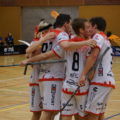

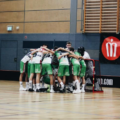



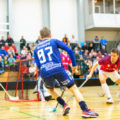

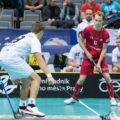
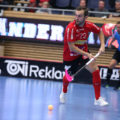
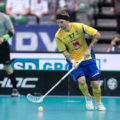
No Comments
Leave a comment Cancel